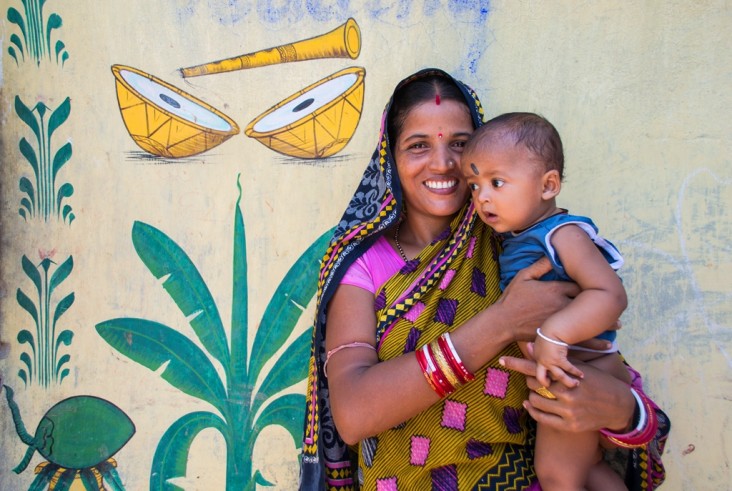India
- History
- Our Work
- Transforming Development Through Innovation & Partnership
- U.S.-India Triangular Cooperation
- Partnership for Energy Access and Security
- Partnership for Sustainable Forests in India
- Partnerships for Health
- Partnership for Education
- Partnership for Water Sanitation and Hygiene (WASH)
- Partnership for Food Security
- Partnership for Gender Equality
- Investing in Afghanistan
- Foreign Assistance Data
- Newsroom
- Newsletters and Fact Sheets
- Speeches
- Resources For Implementing Partners (RFIP)
- Careers
- Partnership Opportunities
- Success Stories
Speeches Shim

Generating sustainable solutions to improve health outcomes in India
A SHARED INDIA–U.S. HEALTH FOCUS
USAID’s health programs in India work across sectors to prevent up to 2 million deaths per year, one-fifth of India’s mortality burden. As the world’s second-most populous country, India faces a number of health challenges: declining but still high rates of maternal and child mortality; widespread malnutrition among children and pregnant women; and the largest burden of tuberculosis (TB) globally. Additionally, India has the third largest number of people living with HIV; vulnerable populations that lack access to basic health care; and more than 39 million Indians who fall into poverty every year due to medical costs. To address these challenges, USAID partners with the Government of India, the private sector, and civil society to strengthen the impact, reach, affordability, and quality of health services for poor and vulnerable households. These efforts build upon decades of USAID’s work in India supporting effective health care.
USAID/INDIA PRIORITIES
PREVENTING CHILD AND MATERNAL DEATHS: Since 1990, USAID has helped save the lives of more than 2 million children in India. Despite this progress, close to 1 million children under five still die every year —almost 660,000 of them on their first day of life. More than 30 million women in India want to avoid pregnancy but do not have access to modern family planning methods. Enabling couples and individuals to determine when and how often to have children is vital to safe motherhood, healthy families, and prosperous communities. With the Government of India, USAID and its partners demonstrate how high-impact solutions can put India on a path to save the lives of more mothers and children. USAID strengthens access to community and district-level health services, targeting lifesaving interventions at the time of delivery. USAID also builds the capacity of community-based health workers, who are often the first and only link to health care for the poor. USAID strengthens family planning service provision and expands the range of family planning methods available. This includes increasing awareness about reproductive health for youth, particularly adolescent girls. USAID focuses its efforts on the urban poor, working to improve both reach and quality of health services, as well as reducing out-of-pocket medical costs.
CHAMPIONING A TB-FREE INDIA: India has the largest number of tuberculosis (TB) cases in the world—over a quarter of total TB and multidrug-resistant TB cases. TB is the most common chronic disease in India and kills one person every minute. More than 2 million people in India are infected with TB annually and more than 480,000 die from the disease. However, TB is curable and MDR-TB—a form of TB resistant to first-line treatment—can be prevented. To better diagnose, cure, and prevent TB, USAID supports the Government of India with its national-level campaign, the Call to Action for a TB-Free India. At the state level, USAID engages Indian health care providers, corporate partners, media, celebrities, academia, and former patients to end TB in India. This effort reduces stigma against TB and people infected by TB, and ensures that those with symptoms are tested and enrolled in appropriate treatment. In urban settings, USAID has provided training to health providers to expand access to TB services and to improve the quality and adherence to international TB standards for diagnosis, treatment, and care.
CONTROLLING THE HIV/AIDS EPIDEMIC: There are more than 2 million people living with HIV in India. Since 1995, USAID has partnered with the Government of India and civil society to improve the prevention and care for populations most at risk of HIV. These combined efforts have helped reduce the number of new AIDS infections by 32 percent since 2007. Through the President’s Emergency Plan for AIDS relief (PEPFAR), USAID focuses on saving lives through active outreach to high-risk groups and by increasing HIV testing and access to care, counseling, and treatment. USAID partners with non-governmental organizations (NGOs), community-based organizations, and municipal corporations to raise awareness. A number of USAID interventions have served as models for national and state programs and have contributed to the effective prevention, care, and treatment for thousands of people living with HIV. Additionally, thousands of children and orphans affected by HIV/AIDS are linked to Government of India education, nutrition, and social protection programs, with USAID support.
COMBATTING INFECTIOUS DISEASE THREATS: The Global Health Security Agenda—a partnership of nearly 50 nations, international organizations, and NGOs to help create a world free of infectious diseases—calls for cross-sectoral, global collaboration to ensure that every country is prepared for public health emergencies. USAID collaborates with partners in India to stop disease outbreaks by closing gaps that prevent the early detection of threats. Through strategic responses focused on the connections between animal and human health, USAID is strengthening India’s capacity to prevent and reduce outbreaks, detect threats early to save lives, and respond with rapid, coordinated efforts.
Achievements
- 4,200 health facilities across India strengthened.
- 10,000 patients to be provided breakthrough drug-resistant TB treatment.
- Two new diarrhea and pneumonia vaccines introduced nationally
- Neonatal mortality reduced by 13 percent in USAID-supported health facilities using quality improvements.
- 25,000 pneumonia deaths and 14,000 diarrhea deaths prevented through USAID support.
- Four tested innovations to reduce maternal and infant mortality scaled up through the public and private sectors.
- More than 40 million pregnant women and children reached with vital health information and services per year.


Comment
Make a general inquiry or suggest an improvement.